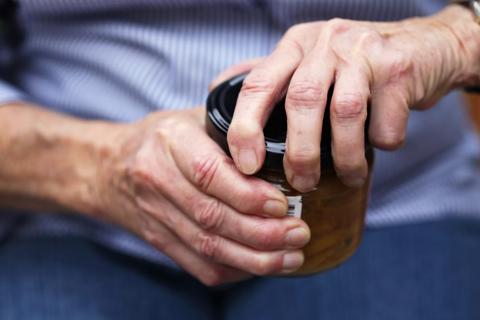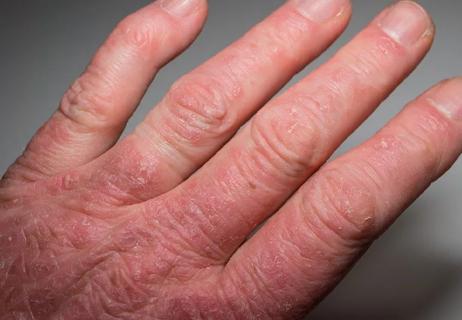Desk work doesn’t have to leave you hurting

Your fingers are flying across the keyboard, shooting off emails, memos, proposals, summaries and updates. Those impressive typing skills serve you well.
Advertisement
Cleveland Clinic is a non-profit academic medical center. Advertising on our site helps support our mission. We do not endorse non-Cleveland Clinic products or services. Policy
But what happens when all that typing leads to aching wrists? We talked to orthopaedic surgeon William Seitz, Jr., MD, about what causes wrist or hand pain — and how to prevent it.
“Using a computer isn’t hazardous in and of itself,” Dr. Seitz says. But if you have any underlying problems with your joints or your skeletal alignment, all those repetitive keystrokes can tip the scales toward pain.
Common underlying problems include previous injuries, osteoarthritis and subtle changes in the curve of the spine or the alignment of limbs due to aging.
“When you have those kinds of things going on, using your hands over and over can make symptoms worse,” Dr. Seitz says.
The source of wrist pain isn’t always obvious. An interconnected network of nerves stretches from your fingertips to your neck, Dr. Seitz says. Just like a kink in one end of a garden hose can cause the water to stop at the other end, a kink in your neck or shoulder can cause problems downstream in your wrist or hand.
Several things can cause pain in the wrist and hands. Some of the more common suspects include:
Carpal tunnel syndrome: This common condition causes pain, numbness, tingling or weakness in the hand or wrist. It strikes when swollen tendons press on a nerve in the wrist.
Advertisement
Cubital tunnel syndrome: Also known as ulnar nerve entrapment, this condition is similar to carpal tunnel. It also causes numbness and tingling in the fingers. But it occurs when nerves become compressed in the elbow rather than the wrist.
Arthritis: It can cause swelling, pain and stiffness in the joints. Both types of arthritis can make wrists and hands hurt:
How can you prevent your wrists from throwing a tantrum? Good ergonomics is your friend, says Dr. Seitz.
If you have occasional achiness in your wrists after a long day of typing, it’s probably nothing to worry about, says Dr. Seitz — especially if it goes away when you stretch or resolves within a few days.
But if it persists (or keeps coming back in the same spot), it’s time to see a doctor to find out what’s going on. Treatments vary, but often, simple remedies such as wrist braces or the guidance of a certified hand therapist can help.
“Pain is a defense mechanism. It’s telling you there’s something wrong,” Dr. Seitz says. “If it’s painful and not going away, get it checked out.”
Advertisement
Learn more about our editorial process.
Advertisement

Simple exercises like tendon glides and finger lifts can have a big impact

Research is inconclusive, so don’t stop eating tomatoes, potatoes and peppers just yet

From heating pads and ice to exercises and splints, find the relief that works for you

What’s the difference between these types of inflammatory arthritis?

The link between joint pain and skin rashes

What’s the difference between these types of arthritis?

Remember to start slow and if things don't improve, ask your doctor about more advanced solutions

Working out is one of the best things you can do to improve your symptoms

Type 2 diabetes isn’t inevitable with these dietary changes

Applying a hot or cold compress can help with pain